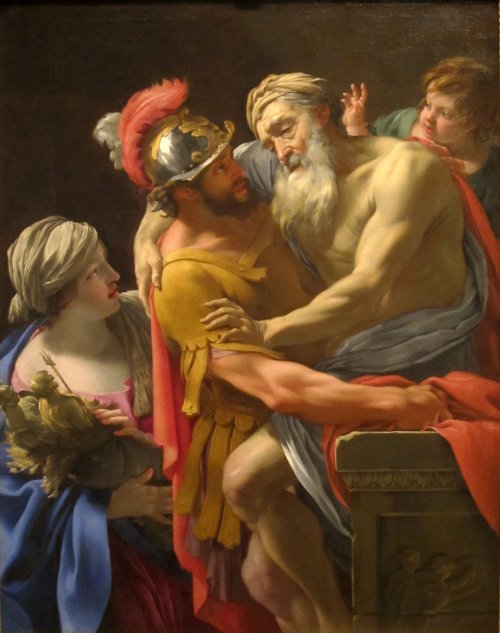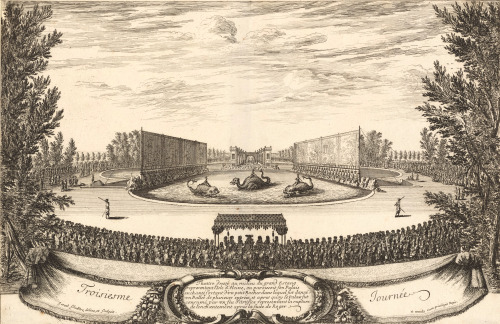#17th-century french art
Aeneas and His Father Fleeing Troy
Simon Vouet (French; 1590–1649)
ca. 1635
Oil on canvas
San Diego Museum of Art, San Diego, California
Post link
Le palais d'Alcine = The Palace of Alcina
Israël Silvestre (French; 1621–1691)
ca. 1673–79
Etching
The New York Public Library for the Performing Arts, Jerome Robbins Dance Division
Caption: Troisiesme Journée
Caption subtitle: Theatre dressé au milieu du grand Estang representant l'Isle d'Alcine, ou paroissoit son Palais enchanté sortant d'un petit Rocher dans lequel fut dancé un Ballet de plusieurs entrées, et apres quoy ce Palais fut consumé par un feu d'artifice representant la rupture de l'enchantement apres la fuite de Roger.
Scene from a ballet presented at Versailles in May 1664. On a pond before her palace, the enchantress Alcina rides on a sea-monster, flanked by two nymphs on dolphins.
Les plaisirs de l'isle enchantée was a seven-day series of entertainments held at Versailles, beginning on May 7, 1664. Given in honor of the queen mother, Anne of Austria, and Queen Marie Thérèse, it provided a pretext to display the power and wealth of the court of Louis XIV. This print depicts a scene from the ballet Le palais d'Alcine, arranged by the Duc de Saint-Aignan to music by Jean-Baptiste Lully, with scenic design by Carlo Vigarani. Presented on the third day of entertainments, the ballet was based on a subplot from Ariosto’s epic poem Orlando furioso, in which Ruggiero (Roger of the print’s caption) attempts to escape the toils of the enchantress Alcina. As the caption reveals, the ballet closes with the destruction of Alcina’s palace amid a display of fireworks.
Probably a plate from Les plaisirs de l'isle enchantée, ou, Les festes et divertissements du Roy à Versailles (Paris: L'Imprimerie royale, 1673–79).
Post link


